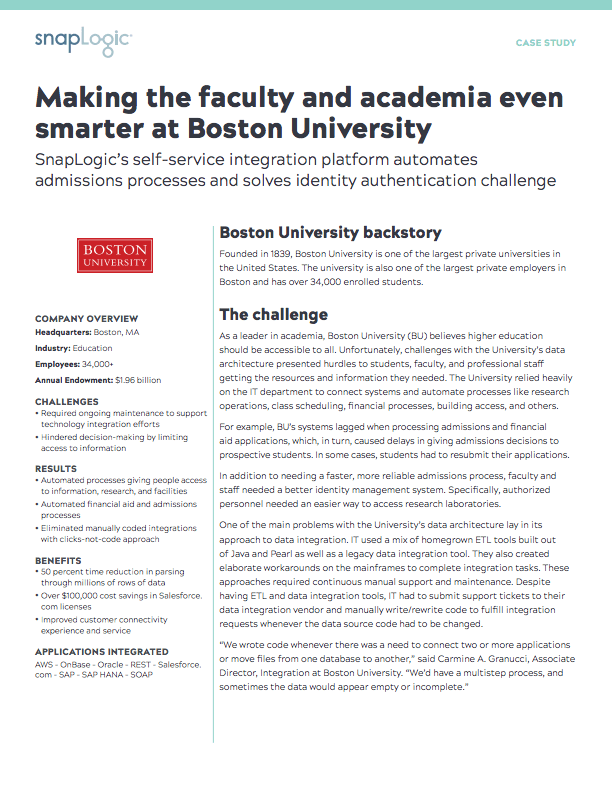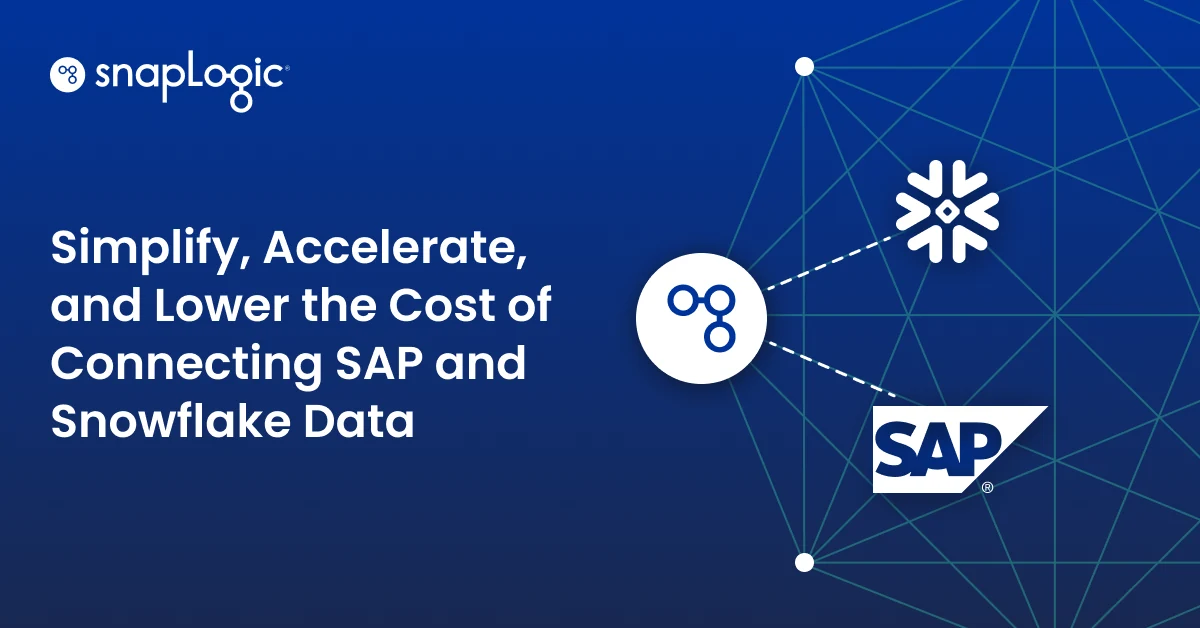Founded in 1839, Boston University (BU) is one of the largest private universities in the United States with more than 34,000 enrolled students. The university remains dedicated to its founding principles that are tethered to the belief that higher education should be accessible to all.
BU receives close to 65,000 applications each year with each one requiring a careful, diligent review. That’s a lot of applications to review especially for an admissions office challenged with a legacy data architecture that slowed down the entire student application process. It wasn’t unusual for the staff to retrieve applicant information in piecemeal with some information even existing outside of their systems. As a result, the admissions office was forced to delay their admissions decisions, which contributed to a series of issues with student admits, financial aid, class scheduling, and other inefficiencies.
Upon reviewing their data architecture, the IT organization identified their data integration approach as the culprit for the missing information that created gaps in the student application process. IT required elaborate workarounds to maintain a mix of homegrown ETL systems built out of Java and Pearl and decade-old mainframes. To tackle integration requests, IT had to manually update or write new code whenever data source code changed.
“We wrote code whenever there was a need to connect two or more applications or move files from one database to another,” said Carmine A. Granucci, Associate Director, Integration at Boston University. “Sometimes the data would appear empty or incomplete.”
Granucci and his team searched for an integration platform that could help them connect applications, move data from one endpoint to another, and eventually move to the cloud without manual effort. With the appropriate integration platform-as-a-service (iPaaS), Granucci believed that his team could inject a standard integration approach that did not require hiring additional developers to build integrations. SnapLogic to the rescue.
“[SnapLogic] enabled us to build codeless integrations and automate processes twice as fast as before by simply dragging and dropping Snaps together,” said Granucci. “We are now able to build and execute an integration within minutes.” Since the SnapLogic implementation, the admissions office accessed all their student information via their salesforce.com instance instead of having to search pieces of information from multiple systems.
Learn more about how SnapLogic helps Boston University speed up their integrations to serve their students education in the case study, “Making the faculty and academia even smarter at Boston University.”











